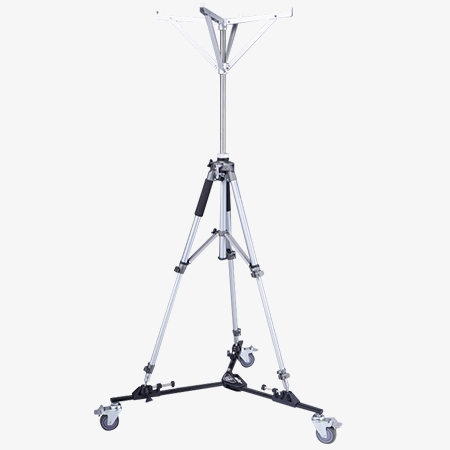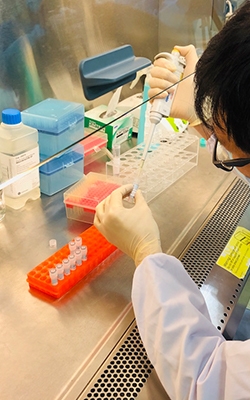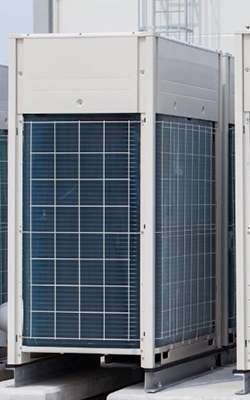The touchscreen balometer capture hood is a sleek, user-friendly device designed for precise air volume measurements in environments like clean rooms and HVAC systems. Utilizing the Pitot tube principle, it ensures fast, accurate readings while operating quietly and efficiently. The device features Bluetooth connectivity for wireless report printing and offers both energy-saving and eco-friendly performance. The FL-1-OP provides a lightweight design with button operation and long-term data storage, while the FL-2-OP enhances functionality with a color touchscreen, guided operation, and Wi-Fi connectivity for remote data export, catering to users with advanced needs.

Common Features of Balometer
- Elegant and aesthetic design of the air flow hood.
- Built with energy-saving technologies, reducing power consumption.
- Quiet operation is ideal for sensitive environments like clean rooms or laboratories.
- Featuring a touch screen with an intuitive interface, the air flow balometer simplifies operation with clear functionality and easy navigation.
- Pitot tube principle for accurate measurement.
- Bluetooth connectivity for printing.

Differences between Two Balometers
- FL-1-OP: This air flow hood features a traditional button-based operation and a lightweight design, as well as a storage for a large amount of measurement data for extended periods.
- FL-2-OP: The flow hood offers a guided operation feature, a high-quality color touchscreen. And this model supports Wi-Fi connectivity and easy data export to external devices or cloud storage.
Application
The balometer is a versatile airflow measurement device used across industries where precise air balancing and ventilation control are crucial. In the pharmaceutical industry, it ensures cleanroom airflow compliance to maintain contamination-free environments. Hospitals use it to monitor airflow in operating rooms and isolation wards, supporting infection control. In HVAC, technicians rely on it for air volume testing and system diagnostics to improve indoor air quality and energy efficiency. The electronics manufacturing industry also uses balometers for airflow control in cleanrooms and static-free zones. Whether for commissioning, troubleshooting, or maintenance, the balometer is essential for professionals requiring reliable, accurate airflow measurements.

Hospital

HVAC

Electronics Industry

Pharmaceutical Industry
| Model | SISCO-BM-FL-1-OP | SISCO-BM-FL-2-OP |
| Measured Air Volume | 150-3500m³/h | 150-4000m³/h, wind speed is converted according to the air volume |
| Differential Pressure | / | Ambient pressure difference real-time display |
| Relative Error at Full Scale | ±5%FS | ±5%FS |
| Self-resistance | ≤5Pa | ≤5Pa |
| Automatic Storage | 999 Airflow values of air outlets | 20,000 airflow values of air outlets |
| Printer | Bluetooth printer | Bluetooth printer |
| WIF Signal | / | Support modbusTCP protocol |
| Touch Screen | / | 4.3-inch touch screen for gloved use |
| Battery | Rechargeable battery, available for 6~8 hours after fully charged | Rechargeable battery, available for 2.5 hours after fully charged |
| Cloth Cover | 1. 570*570(mm); 2. 830*830(mm) | 1. 570*570(mm); 2. 830*830(mm) |
| Bracket | Supportable bracket | Supportable bracket |
| Measurement Environment |
Temperature: 5~40℃; Relative humidity: 10%~70%RH; Measurement of corrosive gases is strictly prohibited |
Temperature: 5~40℃; Relative humidity: 10%~70%RH; Measurement of corrosive gases is strictly prohibited |
| Data Storage | No data loss after power failure (within 4H) | / |
| Account Management | / | Administrator privileges, new and deleted sub-users |
| Data Export | Optional | Supportive |
Q1: What is a balometer?
A1: A balometer is a specialized instrument used to measure airflow, air velocity, and sometimes static pressure within ventilation and HVAC systems. It helps professionals assess and balance air distribution in various environments, ensuring that air is circulating efficiently and meets regulatory standards. The device is commonly used by HVAC technicians, engineers, and building maintenance teams to measure the volume of air moving through ducts, vents, and air handling units. By accurately gauging airflow, the balometer ensures optimal performance of HVAC systems, which is crucial for maintaining indoor air quality, energy efficiency, and system longevity. Additionally, balometers are used in cleanrooms, pharmaceutical settings, and other industries that require precise environmental control for sensitive processes.
Q2: How does a balometer work?
A2: A balometer works by measuring airflow and air velocity in ventilation and HVAC systems. It typically features a sensor that captures air movement as it passes through the device, with data displayed on an LCD screen or similar display. The balometer can measure air velocity at specific points in the system, such as ducts or vents, and calculate airflow in cubic feet per minute (CFM) or cubic meters per hour (CMM). Some models also measure static pressure to help diagnose issues like blockages or inefficiencies in the system. By providing accurate real-time data, the balometer helps HVAC professionals balance airflow, optimize system performance, and maintain indoor air quality.
Q3: How to use a balometer?
A3: To use a balometer, start by positioning the device at the air vent, duct opening, or grille where you want to measure the airflow. Attach the appropriate probe or airflow hood, if necessary. Turn on the balometer and ensure it’s calibrated correctly. The device will measure the air velocity and airflow, displaying the data on the screen in real-time. Take measurements at different points in the system to ensure even air distribution, then use the data to balance the system, troubleshoot issues, or optimize airflow for improved performance and efficiency.
Tips: How do I know if my balometer is giving inaccurate readings?
To determine if your balometer is providing inaccurate readings, first ensure that it is properly calibrated. If the instrument has not been calibrated for some time, it may produce unreliable results. You can compare its measurements with a known reference standard, such as a calibrated pressure gauge or a flow meter. If the readings differ significantly, this may indicate that the balometer is inaccurate. Additionally, check for any potential issues such as clogged sensors, damaged components, or incorrect positioning during measurements. Environmental factors like temperature or humidity changes can also affect accuracy, so it’s important to ensure that these are within the instrument’s specified operating conditions. Finally, regular maintenance and inspection are key to ensuring that your balometer remains accurate over time.
Thank you for buying industrial test and measurement equipment on SISCO.com, all products sold by SISCO and the partner cover a 12 months warranty, effective from the date of receiving the products.
What is covered?
SISCO is responsible for providing free spare parts, and free technical support to assist the customer to repair the defective products until the problem is solved.
What is not covered?
- Product purchased from anyone other than a SISCO store or a SISCO authorized reseller.
- Expendable parts.
- Routine cleaning or normal cosmetic and mechanical wear.
- Damage from misuse, abuse or neglect.
- Damage from use of parts other than SISCO approved.
- Damage from use outside the product’s usage or storage parameters.
- Damage from use of parts not sold by SISCO.
- Damage from modification or incorporation into other products.
- Damage from repair or replacement of warranted parts by a service provider other than a SISCO authorized service provider.
- Damage caused by the application environment not meeting the product usage requirements and the failure to perform preventive maintenance.

